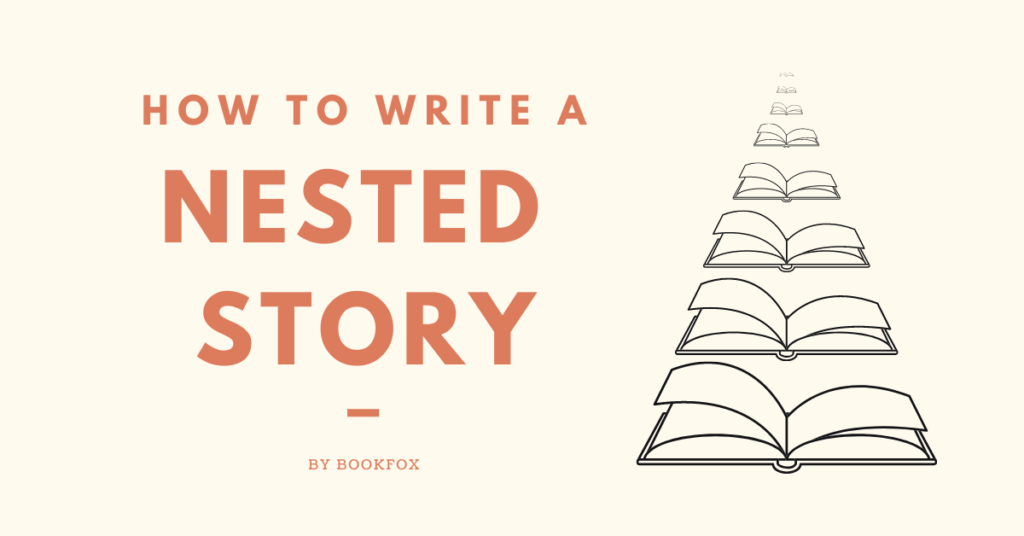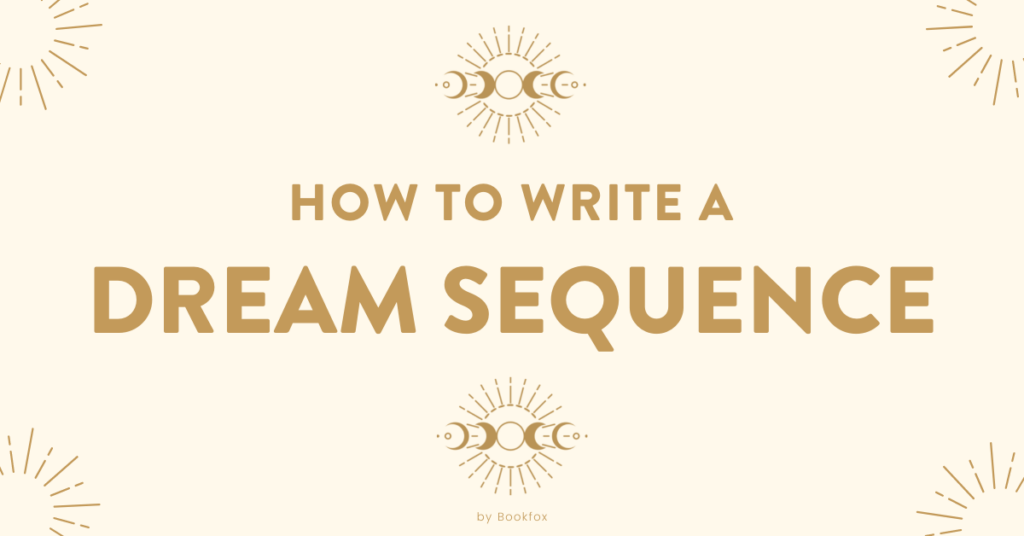
There’s nothing fancy about a list.
Lists are the vanilla flavor of fiction, the most basic tool the writer can have in their toolbox.
It’s the simplest way to organize information — no fancy frills, no tricks, no complexity. What you see is what you get.
1, 2, 3. A, B, C.
Yet in its multiplicity, in its overwhelming flush of details and abundance, there’s also something deeply pleasing.
Lists give you this kaleidoscopic view of an area, or place, or person. It’s the literary equivalent of a 360 degree rotation in a movie. The overwhelming abundance of details helps you to know the thing being described in a deeper way.
Take a look at the five lists below to figure out how you can use lists in your fiction to:
- Foreshadow the future
- Describe a person
- Control time
- Create theme
- Astonish your readers.
1. Lists as Memory
Julian Barnes starts his novel, “A Sense of an Ending” with a list of six items.
These are all events in his memory, but it’s not until you read the whole book that you realize that each of these seemingly random details are huge (HUGE) events in this story.
So this is a list doing double-duty — first as a list of his memory, and second as a foreshadowing of what will happen in the book.
“I remember, in no particular order:
— a shiny inner wrist;
— steam rising from a wet sink as a hot frying pan is laughingly tossed into it;
— gouts of sperm circling a plughole, before being sluiced down the full length of a tall house;
— a river rushing nonsensically upstream, its wave and wash lit by half a dozen chasing torchbeams;
— another river, broad and grey, the direction of its flow disguised by a stiff wind exciting the surface;
— bathwater long gone cold behind a locked door
It’s quite rare to start a book off with a list — it’s very counter-intuitive — but it works because it’s telling us small hints about what is to come.
Please remember that the order of items in a list is very important. For instance, the smallest, most inconsequential items in this list come first. But the last item, of bathwater gone cold behind a locked door, sounds innocuous at first but then you realize there could be far more macabre interpretations.
2. Lists as Characterization
At the end of Wendell Berry’s “The Memory of Old Jack,” a character goes into a barn and observes what’s hanging from the boards:
“Hanging from nails driven everywhere into the boards are various pieces of harness, collars, collarpads, an odd hame, a set of check lines, pieces of leather strap, short lengths of rope, iron rings, snaps, lengths of chain, the iron fittings for singletrees and doubletrees, a woodeen pulley, lap rings, clevises, plow plates, rusty horse and mule shoes, bridle bits, a broken shovel handle — the leftovers and odds and ends of a lifetime of farming, too good to throw away.”
What I love about this list of nineteen items is that I don’t even know what some of them are.
I mean: a hame? clevises?
But it’s these farming-specific items that convince me of the author’s knowledge of farming, and establish his credibility. Also, this list makes me experience the scene in a fulfilling way, because I’m truly immersed in this barn.
This is also wonderful characterization: this is a man who keeps everything, everything that might be useful for his job of farming the land. He’s not a hoarder, no, but a man who knows all the necessary tools and keeps them all neatly organized.
3. Lists as Pacing
A list can also serve a useful way to convey the passing of time and places, such as this example from Orhan Pamuk’s “My Name is Red”:
“We were two men in love with the same woman … we traveled like brethren through deserted streets given over to battling packs of stray dogs, passed burnt ruins where jinns loitered, mosque courtyards where angels reclined on domes to sleep, beside cypress trees murmuring to the souls of the dead, beyond the edges of snow-covered cemeteries crowded with ghosts, passed endless shops, stables, dervish houses, candle works, leather works and stone walls…”
By my count, there are 11 different places these two men pass on their journey. And so this is a summary paragraph.
It would slow down the pace too much to describe each of these 11 places in detail, so instead Pamuk makes a list of all of them, and we feel the swift passage of time.
Because it’s not just places which we’re traveling through in this excerpt, it’s also time. This is a whole journey, but we’re swept through it swiftly because of this format of a list.
I’ll also add that lists are only good lists when you give tremendous specificity of details. Look at the details Pamuk offers:
- battling stray dogs
- burnt ruins
- mosque courtyards
- cypress trees
Every single one of those items calls up a visual image to the reader immersing them in a strong visual. Take heed and do likewise.
4. Lists as Theme
In Claire Vaye Watkins novel, “Gold Fame Citrus,” lists aren’t just a writing technique she uses every once in a while. They’re a fundamental aspect of her writing style.
There are tons of lists festooned throughout the novel, and after reading so many of them they start to give the book a unique texture, a kind of recognizable flavor.
For instance, look at this list that two parents make to get to know a baby they’ve kind of stolen from some deadbeat parents:
They cataloged Ig’s tastes. Likes: crackers, rocks, ration cola, questions, her new shoes, the ding the antique phone made when she bashed it with the earpiece, opening and closing the sliding doors, the tool belt, the burbling sounds Ray made for her benefit, mounting and dismounting things, i.e. the stairs, the fireplace ledge, the space-age sofa.
This is an example of characterization through summary rather than scene. Watkins could have taken time to create scenes that showed the baby’s character, but instead she made this list which gives us a rapid-fire sense of who this child is and what she’s like.
I also like the hourglass shape of this list.
- It starts with a series of short things, mostly one word long
- In the middle it opens up into longer phrases
- By the end it has returned to shorter things
When you create a list, you should always be thinking about the shape and organization of it.
- Does it escalate from small to big and back to small (Watkins)
- Does it move from minor to major? (#1, Julian Barnes)
- Does it veer wildly among unlike items (Borges, the #5 example below)
The better you get at recognizing the structure of lists in other author’s lists, the better you’ll get at creating your own lists that flow and build.
5. Lists as the Inexpressable
All the lists above are fairly neat and organized. They’re doing things very reliably in the storyline. Kind of like the bread and butter of fiction techniques: dependable but not especially fancy.
But what about lists that are unruly and unmanageable? Lists that capture the wildness of existence and raise the hair on the back o your neck? Lists with such propulsion and energy that you leap out of your reading chair and start swearing at the author because they’re just so damn good?
That’s what Jorge Luis Borges does in this short story, “The Aleph.” It’s a pretty short story, but 475 words of it is this long list:
“I saw the teeming sea; I saw daybreak and nightfall; I saw the multitudes of America; I saw a silvery cobweb in the center of a black pyramid; I saw a splintered labyrinth (it was London); I saw, close up, unending eyes watching themselves in me as in a mirror; I saw all the mirrors on earth and none of them reflected me; I saw in a backyard of Soler Street the same tiles that thirty years before I’d seen in the entrance of a house in Fray Bentos; I saw bunches of grapes, snow, tobacco, lodes of metal, steam; I saw convex equatorial deserts and each one of their grains of sand; I saw a woman in Inverness whom I shall never forget; I saw her tangled hair, her tall figure, I saw the cancer in her breast; I saw a ring of baked mud in a sidewalk, where before there had been a tree; I saw a summer house in Adrogué and a copy of the first English translation of Pliny — Philemon Holland’s — and all at the same time saw each letter on each page (as a boy, I used to marvel that the letters in a closed book did not get scrambled and lost overnight); I saw a sunset in Querétaro that seemed to reflect the colour of a rose in Bengal; I saw my empty bedroom; I saw in a closet in Alkmaar a terrestrial globe between two mirrors that multiplied it endlessly; I saw horses with flowing manes on a shore of the Caspian Sea at dawn; I saw the delicate bone structure of a hand; I saw the survivors of a battle sending out picture postcards; I saw in a showcase in Mirzapur a pack of Spanish playing cards; I saw the slanting shadows of ferns on a greenhouse floor; I saw tigers, pistons, bison, tides, and armies; I saw all the ants on the planet; I saw a Persian astrolabe; I saw in the drawer of a writing table (and the handwriting made me tremble) unbelievable, obscene, detailed letters, which Beatriz had written to Carlos Argentino; I saw a monument I worshipped in the Chacarita cemetery; I saw the rotted dust and bones that had once deliciously been Beatriz Viterbo; I saw the circulation of my own dark blood; I saw the coupling of love and the modification of death; I saw the Aleph from every point and angle, and in the Aleph I saw the earth and in the earth the Aleph and in the Aleph the earth; I saw my own face and my own bowels; I saw your face; and I felt dizzy and wept, for my eyes had seen that secret and conjectured object whose name is common to all men but which no man has looked upon — the unimaginable universe.”
You should be sweating after reading that. You should be on the floor with your mouth open.
I mean, the sheer range. The jumps of logic and type and time.
- The way he moves from highly specific (dark blood and sex) to the highly abstract (modification of death).
- The way he dances from the immediacy of present tense only to jump backwards into memory (thirty years before).
- The way he lurches from mundane items (grapes, snow, tobacco) to heart-wrenching insights (the cancer in her breast).
- The way he connects disparate events, such as the sunset in one country reflecting the color of a rose in another country.
- The way he shifts between the tiny (delicate bone structure of a hand) and the gigantic (all the ants on the planet).
This list is a kaleidoscopic vision of existence itself, through time and space and what can be spoken and what must remain mysterious.
Now, I don’t have a neat writing craft lesson to teach about Borges’ list, but I think it serves as an example of the possibilities of the power of lists. Even though lists are such humble tools, in the hands of a fantastic writer they can transform into something magical and almost verbally supernatural.
I will say this, though: he uses the technique of anaphora to tie it all together.
Anaphora just means that the beginning of each phrase starts the same way: “I saw…”
Without that unifying beginning, the list would fly apart from the stress of all the different wild elements. But with that beginning, it feels more like a cohesive list, organized the protagonist’s own vision.
Would I recommend attempting this type of list in your own fiction? Well, only if you’re brave. It’s tough to pull off a list as ambitious as this.
But I do know this for certain: if you use lists regularly in your fiction, you will write better stories because of them.
“Always lists to be made, as if writing items in neat vertical rows might stave off randomness and chaos.”
– Dani Shapiro
“The list could surely go on, and there is nothing more wonderful than a list, instrument of wondrous hypotyposis.”
– Umberto Eco



11 comments
This is great! Thank you.
The last one, Borges, is my favourite – for its sheer breadth and ambition.
I do love the opening to ‘A Sense of an Ending’ though – it blew me away the first time I read it.
Wow. That last one blows me away.
Thank you so much- I enjoyed those lists enormously and your explanations
Thanks for this! I’ve never really considered the power of lists, but am definitely intrigued now. Great examples!
As always, I found thos post to be a great lesson. As I read Borges’ list I immediately thought of the ‘tears in the rain’ monologue from Blade Runner.
Ive seen things you people wouldn’t believe… Attack ships on fire off the shoulder of Orion… I watched C-beams glitter in the dark near the Tannhäuser Gate. All those moments will be lost in time, like tears in rain… Time to die.
Thank you. I’m an impatient reader, so my eye sometimes skips long lists. I like the technique as a way to info dump but I see your teacher’s point.
Brilliant, illuminating, enlivening, radioactive…
GOOD ARTICLE – I never thought to use LISTS to define characters or situations or ….. before reading your article. I’m a new part-time detective crime writer working on my first book, in my spare time, and mining the daily blog posts I get from others.
My character travels to perform, and after reading your article, I’m deciding whether making a list of venues where he could have performed and fabricate a separate list of fictitious acts with whom he could have performed, would be an appropriate use of lists?
Hi Ralph, yes, I think that could work!
I really like the hourglass one. Really honing in on the character’s curiousity & fascination with/appreciation for the mundane which is lovely.
The last one I don’t think is as great as you say. It’s not very comprehensible & the repetition of “I saw” makes it longer than it needs to be. Maybe if every sixth list item had “I saw” to remind the reader what he’s talking about. Because as you said these things are otherwise unrelated. He mentions specific places & names that don’t need names because they are never again mentioned & hold no meaning to the reader. A lot of the items are nonsense speak even ” I saw convex equatorial deserts and each one of their grains of sand”.
Anyway the most valuable takeaway seems to be #3, Lists As Pacing.